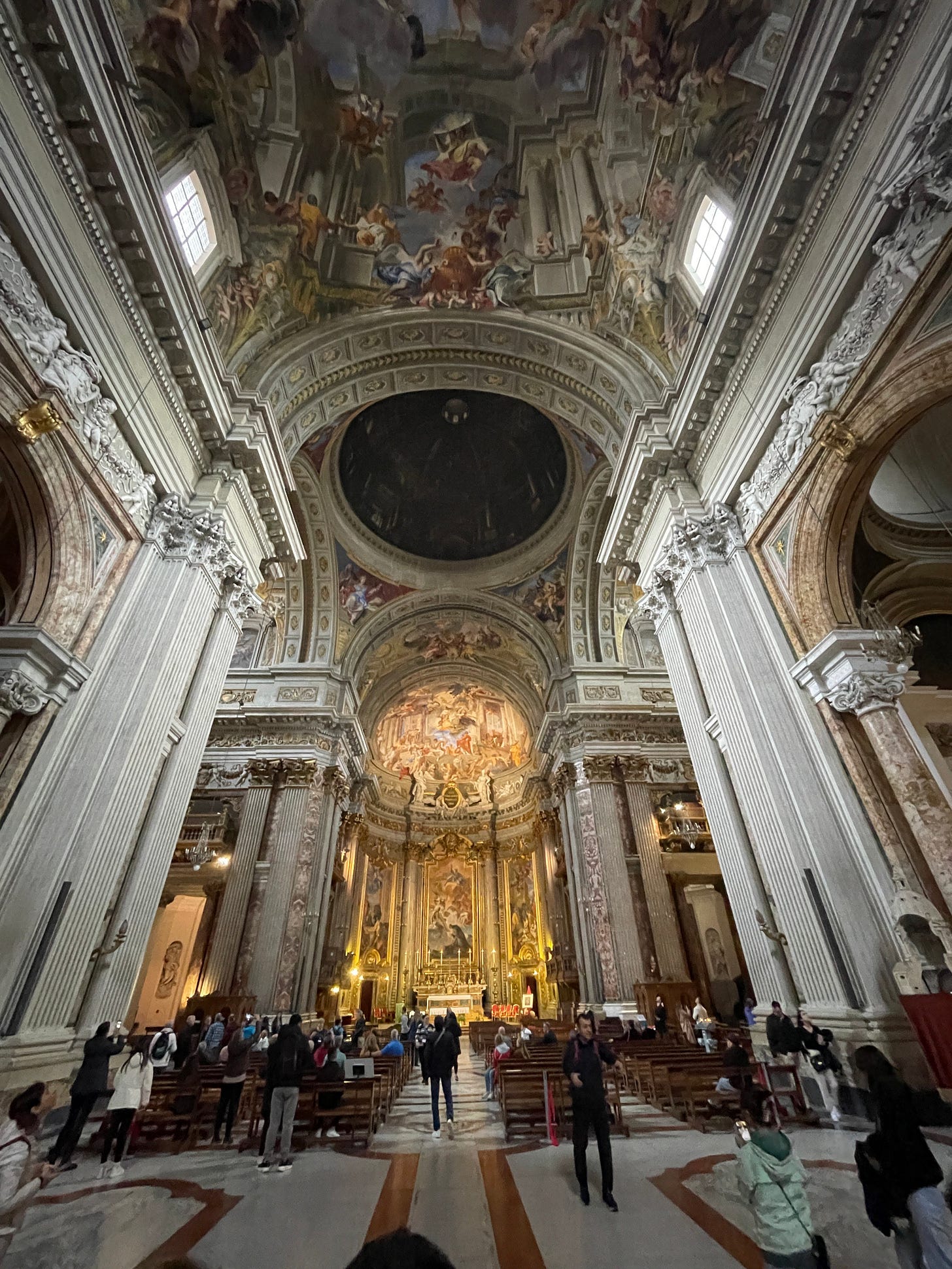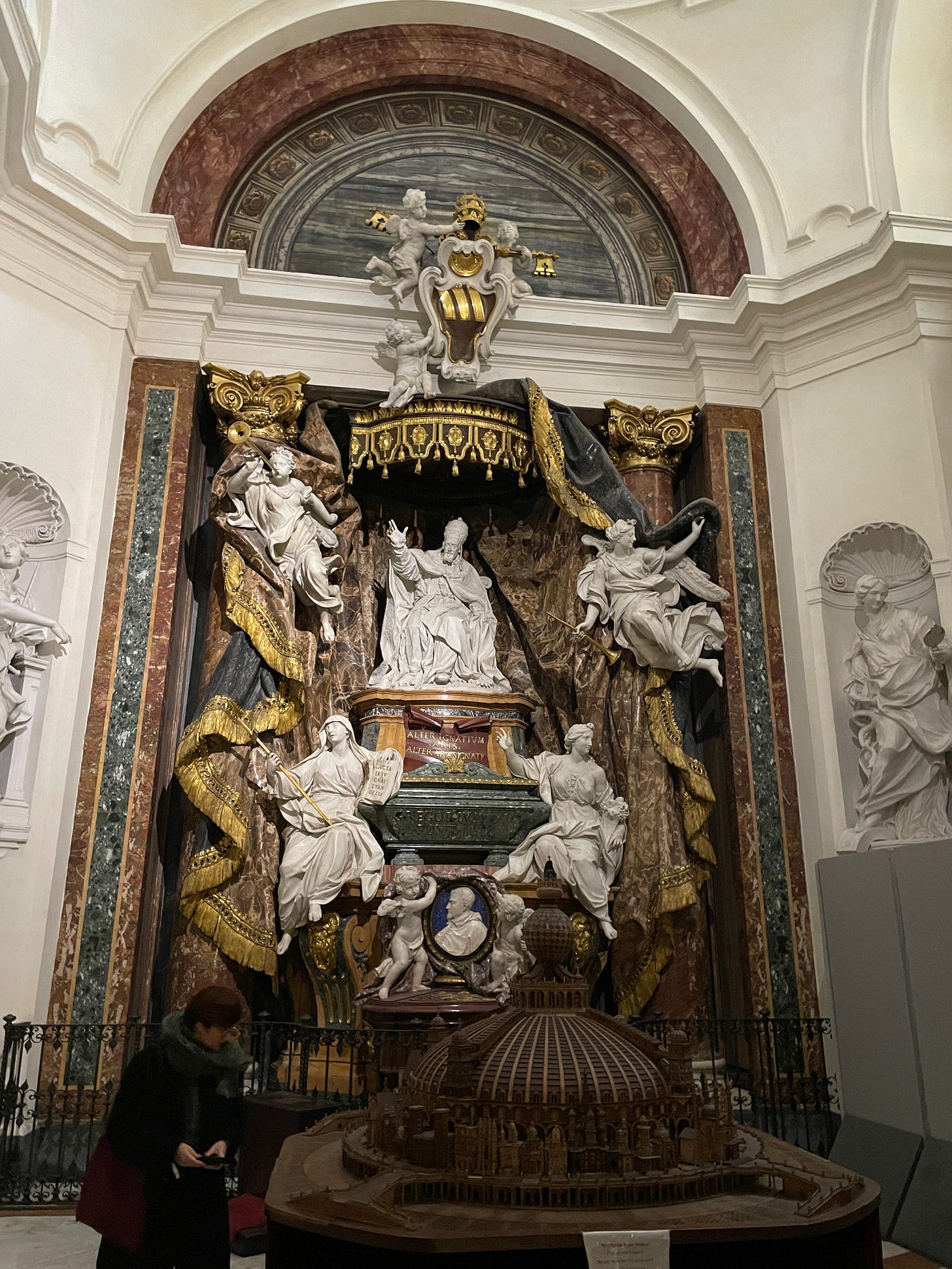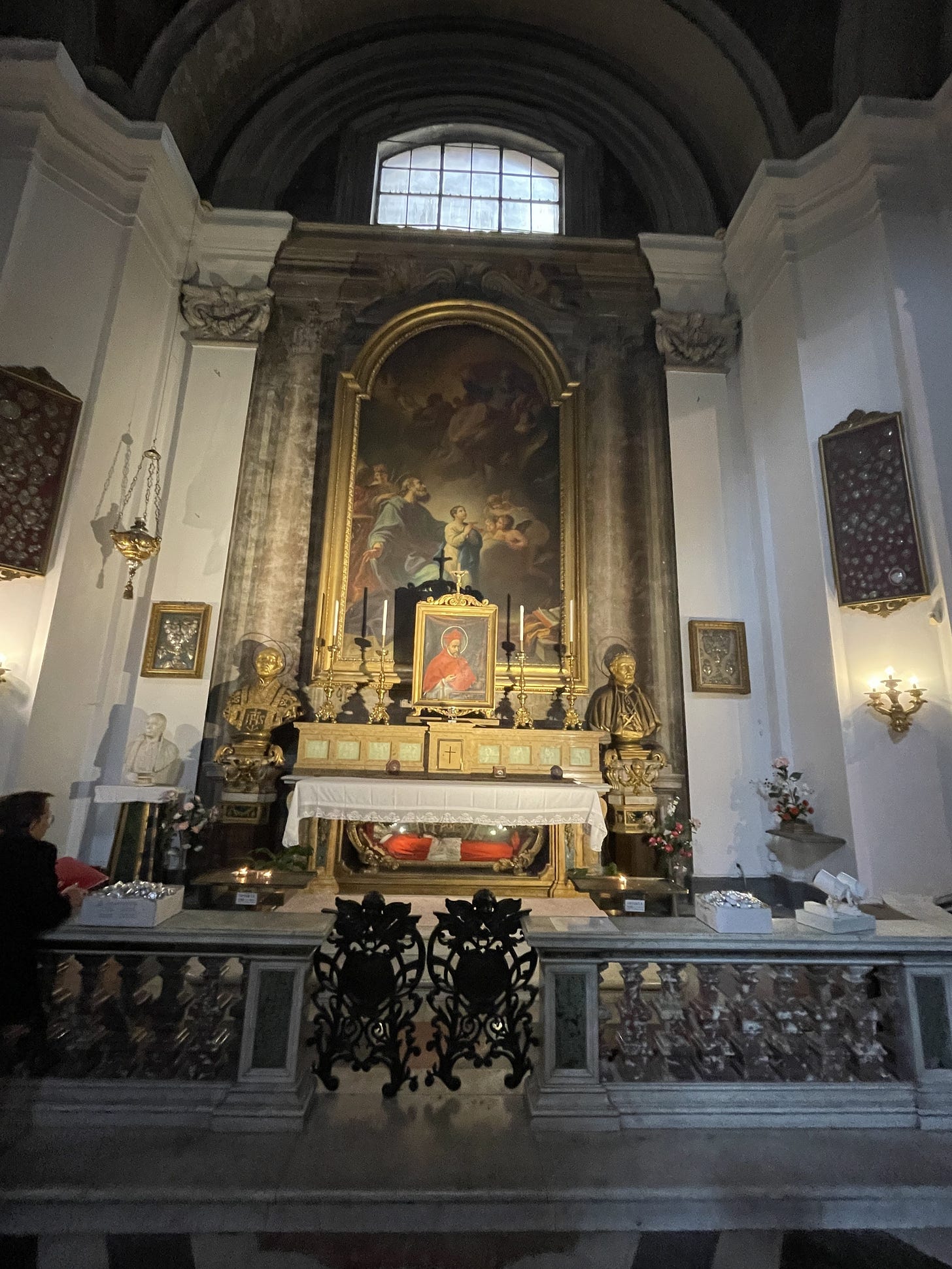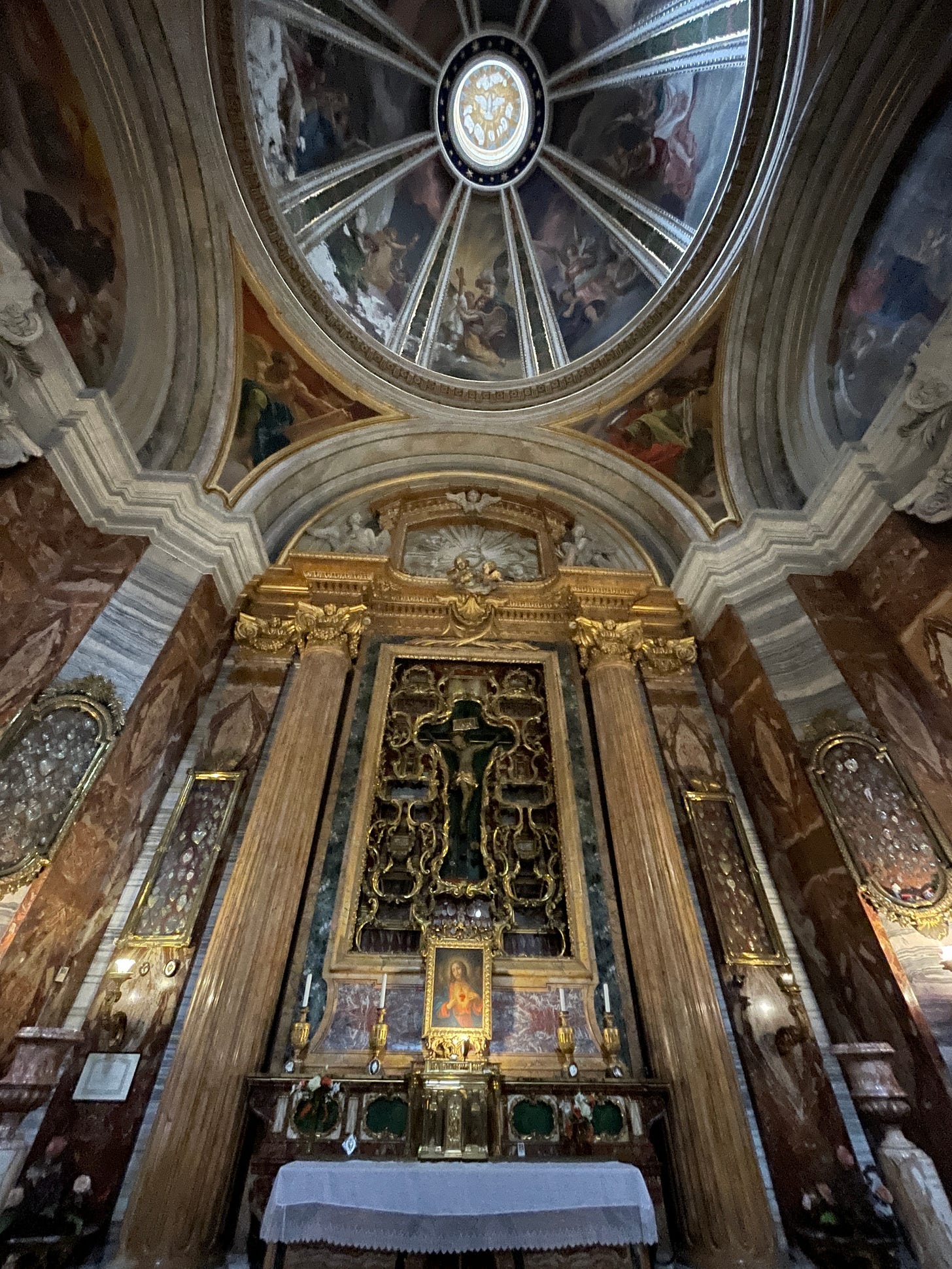This church, as you might surmise, is dedicated to Saint Ignatius of Loyola (1491-1556). We mentioned him in another recent church, the Gesù. This church was begun in 1626 at the suggestion of Gregory XV who canonized Ignatius in 1622. Interestingly (to me at least), none of the alcoves have statues in them. Ignatius founded the Society of Jesus (aka the Jesuits). If you aren’t familiar with him, you should probably pause and go learn about him. His order has been very influential in the Church, and Jesuit missionaries were instrumental in spreading the faith during the “Age of Discovery.”
The interior reflects a post-Trent church design, being in the shape of a cross with a single nave. Archways and fluted columns abound, drawing our eyes up to what my tour book calls “Rome’s most famous baroque fresco.” Check it out.
There are windows up there, but most of the 3-D effect is the masterful use of perspective by the artist, Andrea Pozzo, himself a Jesuit. It depicts Jesuit missionary activity throughout the world. Let’s move forward a bit and check out this cupola.
If it looks a little strange, that’s because it is actually a flat ceiling. There is no cupola, but more perspective painting. This was actually the first thing Pozzo was commissioned to paint in the church, and because it was so well done, he was kept on to do the vault as well. From there, Pozzo had pretty much sold himself, so we see his work in the apse frescos as well. He certainly understood perspective. Of course, there are side altars. Let’s turn to some of those next.
This is the altar of the Annunciation, represented in relief. Below the altar are the remains of St. John Berchmans (1599-1621), a Jesuit scholastic who died while studying in Rome. Though not very well known in the United States, his veneration is spread through many other countries.
Next we see the tomb of Pope Gregory XV(1554-1623). He reigned for a little over 2 years as the pontiff. He is remembered for founding the Congregation for the Propagation of the Faith, a Vatican ministry charged with missionary work. He also canonized Saints Ignatius of Loyola, Francis Xavier, Teresa of Ávila, Philip Neri, and Isidore the farmer. Below his tomb is the tomb of Cardinal Ludovico Ludovisi, who built the church. Unfortunately, I don’t remember what the structure in front of the altar is. The sign seems to merely say “don’t touch” in a few different languages.
Above is the chapel of St. Aloysius Gonzaga (1568-1591). His name may ring a bit more familiar because of Gonzaga University, a Jesuit school in Spokane, Washington. His remains are in the altar. He died while tending victims of an epidemic in Rome. The figures sitting atop the pediment supported by four twisting columns are meant to represent purity (left) and mortification (right).
St. Robert Bellarmine’s (1542-1621) chapel is a bit more low-key. St. Bellarmine was a Jesuit, Archbishop, and Cardinal, and has been named a Doctor of the Church. He played a key role in the Catholic reformation following the Council of Trent. His body lies in the glass coffin below the altar. He was a very influential and powerful figure in the church of his day, well known for his learning and writing. His Catechism was the de facto standard for the Church for centuries. The painting is “St. Joachim Presents Mary to the Father.” Also of note, the columns flanking the painting are painted, not real marble
Finally, we have a side altar with an 18th century carved crucifix surrounded by various relics. This one has an actual cupola, with scenes referring to Christ’s passion. Here’s a detail shot of the cupola.
I hope you enjoyed this mini-pilgrimage to Rome. You can subscribe to get these in your inbox for free. If you are so inclined, you can also support this work by buying me a coffee (or cookies…I’m pretty easy to please.)
Grace & peace,
Chris












